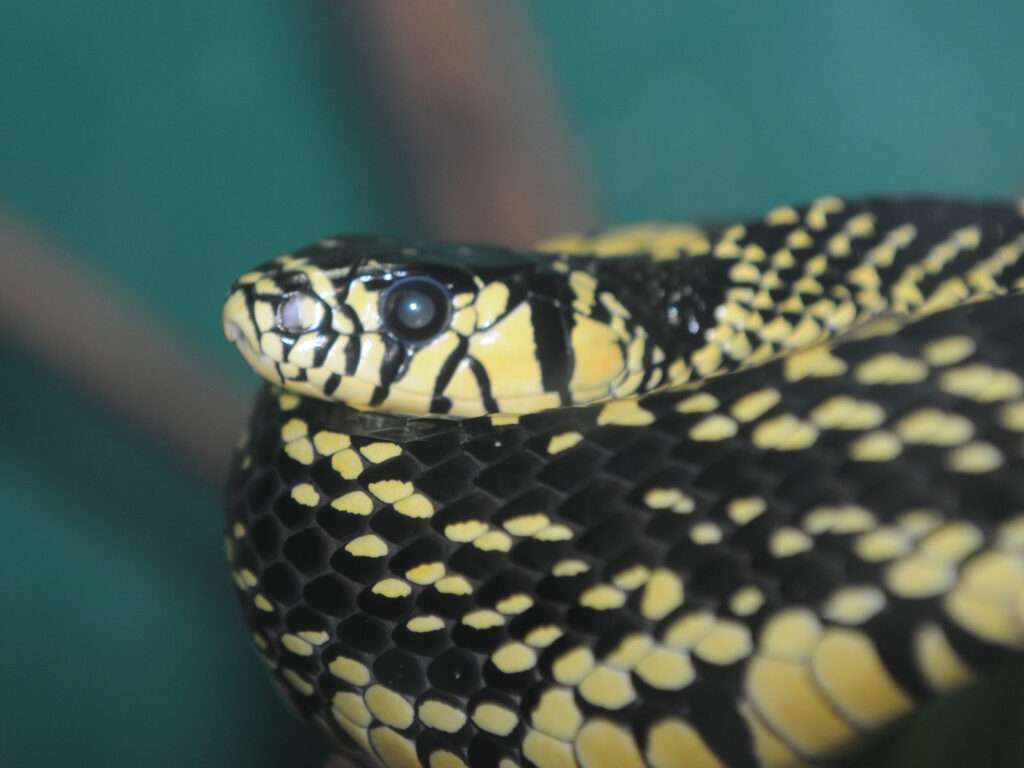
Description:
Scientific name: Spilotes pullatus
Life span: Up to 15 years
Spilotes pullatus is a big nonvenomous colubrid snake species native to warmer regions of the Americas. S. pullatus has yellow dots that could create crossbands on its dorsal surface. Yellow is present at the snout’s tip.
The body is fairly laterally compressed and rather lean. The head and neck are separate structures. The pupil of the medium-sized eye is rounded.

Native Region/Habitat
It can be found in Trinidad and Tobago, southern Mexico, Central America, and northern and central South America. It frequently resides close to water and prefers to live in forested environments.
Behavior:
Although mostly terrestrial, it is also arboreal. It is a nocturnal, vigorous forager. When left alone, this specific type of snake is often fairly calm, but when threatened, it will hiss loudly and shake its tail (despite not having a rattle). They have the capacity to substantially expand their necks.
Care As a pet/In captivity:
- Compared to typical North American rat snakes, tropical rat snakes are far more active and require a lot more area (they are not close relatives, but the terminology is established in the pet trade). Adults do best in cages that are at least 6 x 5 feet in size and are carefully built. Newspaper frequently ends up crumpled in a corner due to this snake’s energetic movements, while substrates made of cypress mulch, eucalyptus bark, and other materials may be used. In terrariums lined with washable material, younger creatures raised in aquariums may be kept.
- Tiger Rat snakes can live in environments with daytime highs of 86°F and nighttime lows of 78°F. A spotlight-style lamp should be used to create a 90 F basking spot. You can provide warmth at night with a ceramic heater, a heat pad, or a red-and-black reptile night light.
- Tiger Rat snakes will eat a range of different prey. For caged animals, a pure mouse- and rat-based diet is fine. Unlike some snakes (I had a Green Anaconda that would only accept muskrats, and another that “insisted” on wild-caught Norwegian rats! ), you can add diversity in the form of chicks, gerbils, and other animals without having to worry about causing a problem. Feeding someone who is hungry can cause them to behave erratically, so be careful.
Table





